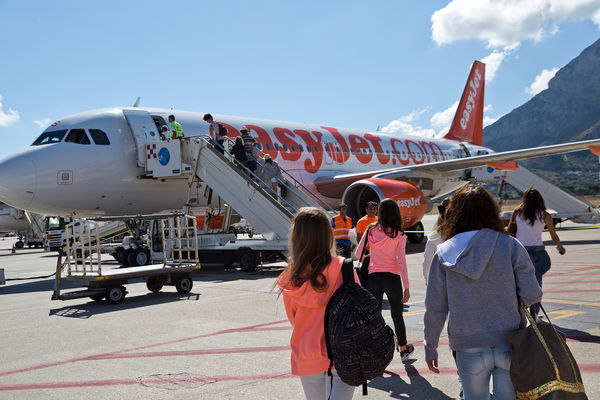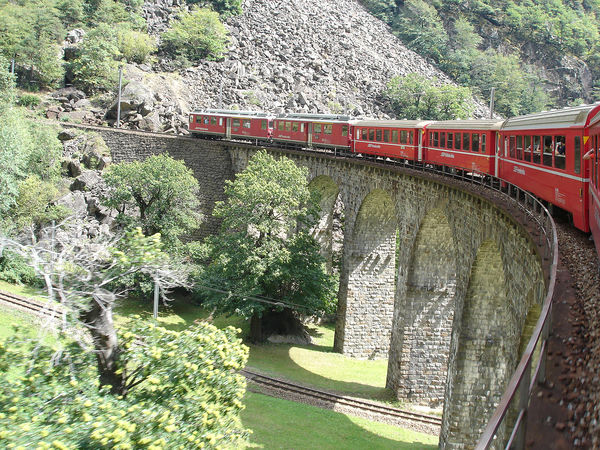Planes, Trains, and Automobiles: Deciding How Best to Get Around in Europe
By Rick Steves

In Europe, getting from Point A to Point B is a snap. The train system shrinks what is already a small continent, making a whirlwind or far-reaching tour a reasonable possibility for anyone. For me, trains remain the quintessentially European way to go, and the best option for romantics. However, the proliferation of extremely competitive discount airlines — and more affordable car rental options — has revolutionized European-itinerary planning: It's turned vagabonds into jetsetters.
Over the years, my travel style has evolved. In the old days I used Eurail passes to go everywhere by train. But today rail passes come with more caveats — mainly that you've often got to pay extra fees to ride the fastest trains (and these trains require you to reserve your seat at least a few days in advance, cutting into the spontaneity that makes train travel a joy). Nowadays, I cobble together a mix of transit options: I buy point-to-point train tickets for one-off hops — and rail passes when I'm doing a lot of train rides in the same country or region, I take big leaps by air, and I drill into rural areas with a rental car.
Generally, European trains go where you need them to go and are fast, frequent, and usually affordable. And for many travelers, the pleasure of journeying along Europe's rails is as good as the destination. Compared to flying, both trains and cars keep you close to the scenery and to Europeans. If you're connecting nearby destinations, the train is generally more practical than flying, and may or may not be a better option than driving.
When considering a car versus other options remember these major factors: car rental costs the same for one person as it does for a small group; if you're packing heavy or aren't very mobile for another reason, a car is a blessing; and while cars are generally best for exploring the countryside and villages, they are expensive headaches in big cities.
To get between moderately distant cities, a train may be your fastest option. On a European train, it's a futuristic world: I was recently on a train going across the French countryside — it was silent, it was smooth, there was beautiful pastoral scenery out the window, and we were zipping along at 180 miles per hour into Paris.
The extreme speed of modern trains really sunk in when I noticed, in Munich's main train station, cute little birds that'd been squished to the windows of the trains — a surreal image. It occurred to me that this is a dangerous continent if you're a slow bird. I can't imagine this would happen where I live in Seattle — perhaps the bird would be enjoying the ride on the rooftop, sitting on a folding chair with a cigar and drink...but not squished to the windshield. And European trains just keep getting faster.
The continent-wide upgrade to faster trains mean there are now fewer journeys long enough to make the classic "overnight trip" by train. Still, I love to sleep on the train when I can. By traveling overnight, I save a whole day in my itinerary. Say I'm at a Munich beer hall until late, when I stumble over to the station and get on the train, only to be navigating the canals of Venice by nine the next morning. Some travelers sit upright all night, aching for a flat place to rest, just to save a few bucks. I prefer booking a bunk in a dorm-like sleeping car called a "couchette" for the cost of a cheap hotel room.
These days, once I've booked my round-trip flight to Europe I start shopping for whatever one-way flights I need within Europe to put my trip together (and if I'm making any same-day connections with my transatlantic flight, I arrange this as part of the same booking, and with a partner airline). When I first started traveling, it simply wasn't affordable to buy one-way airline tickets between European cities, but today that kind of thinking is so 20th century. After Europe deregulated its airways in the 1990s, a flock of budget-conscious, no-frills airlines took flight. That's driven prices down even among major carriers, and as I generally to stick with these, my one-way hops within Europe average about $100. But discount airlines can cut down the price even lower, with many fares in the $20 range — and the established ones, such as EasyJet and Ryanair, have route maps within Europe that rival their legacy competitors. (Just be aware that the cheaper airlines usually use more remote airports, and have more restrictive baggage policies.) To get the lowest fares, book long in advance.
For me, a big part of the joy of travel is experiencing the sheer foreignness of the mechanics of everyday life abroad: eating different food in different settings, sleeping in new places, and navigating an extensive, efficient transportation system completely unlike our own. While driving and flying each have their place — and can be the most efficient and economic options — I love the trains. There's nothing quite like arriving somewhere by rail. It's part of the magic of Europe: While you can drive right up to the Austrian hamlet of Hallstatt on a pleasant highway and park just outside town, picture pulling into the hut-sized station across the lake from Hallstatt's cobbled market square, catching the waiting boat, and watching the town's shingled roofs and church spires grow bigger as the mist lifts off the water. That's an experience you'll never get at home.

